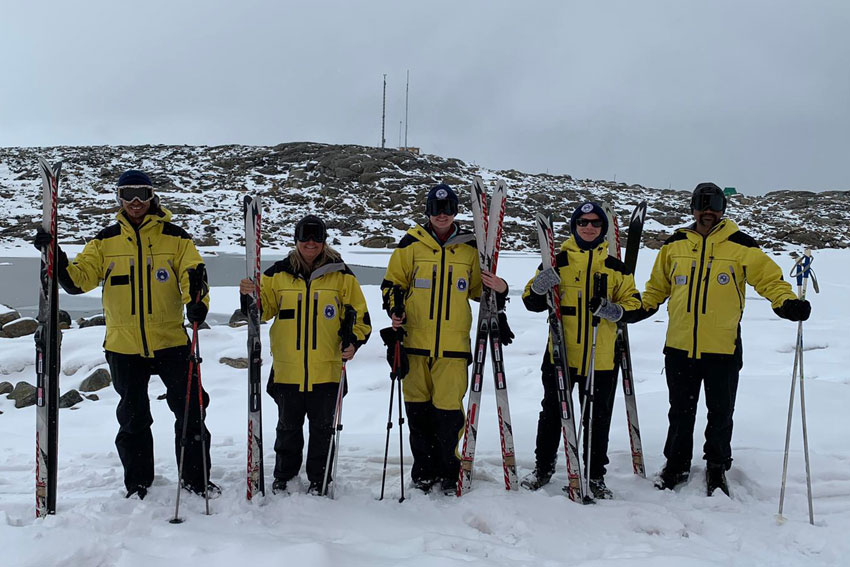Antarctic summer for AUT academics

For close to two months, as part of a team of five scientists, Professor Bollard and Doshi are using drones to map the ancient moss beds of the Australian Antarctic Division-managed Casey Station area.
The research is conducted in partnership with SAEF – a $A36 million Antarctic research programme funded by the Australian Research Council as a Special Research Initiative.
AUT is a core partner in SAEF, and Professor Bollard is co-leader of the drone project with Professor Felipe Gonzalez from Queensland University of Technology.
Professor Bollard is a pioneer in the use of drones and remote sensing systems for research in extreme environments like Antarctica, and Doshi is the team’s chief drone pilot.
Professor Bollard was invited to the prestigious project following the success of previous projects with Doshi and Professor Len Gillman mapping protected areas in Antarctica for the New Zealand Antarctic Research Institute.
Plant life in Casey is the most extensive in Antarctica, a continent with extreme conditions that very few plants can survive in. Mosses are the largest and oldest plants to grow there, with beds of up to 50 metres wide and plants up to 500 years old.
The moss in Antarctica is an important indicator of climate change, as it is sensitive to variations of temperature and moisture.
Mapping and monitoring the beds over time allows researchers to understand the health of the mosses, identify areas of risk, and gain a better understanding of how climate change is affecting the region.
The drones used at Casey are fitted with specialised cameras and sensors to collect high-resolution imagery of the moss beds over great distances.
In a process that Professor Bollard describes as “like mowing the lawn but in the sky”, they will capture thousands of photographs, which will be stitched together for use in a variety of research, by this team and others.
Monitoring the moss from the ground are Krystal Randall, a postdoctoral biologist who recently submitted her PhD on moss microclimates, Dr Johan Barthélemy, a specialist in smart technologies that use AI, machine learning and big data analysis and Dr Juan Sandino, a postdoctoral engineer interested in developing drone-based remote sensing systems for environmental monitoring.
In addition to studying the effects of climate change, the team also hopes to use the data to develop conservation strategies for the moss and other vulnerable plant species in the area